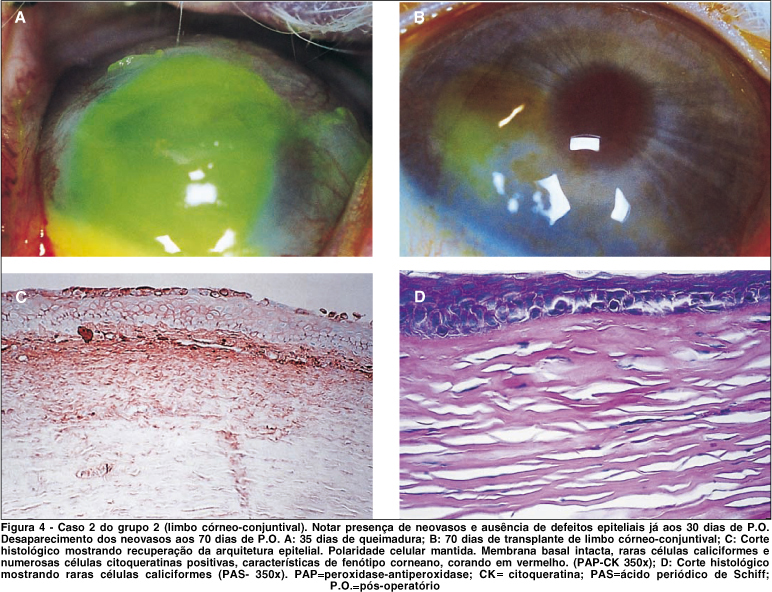Purpose: To compare corneal recovery after ocular chemical burn in rabbit eyes treated with conjunctival limbus or keratoconjunctival limbus autografts. Methods: Thirty-five rabbits underwent a unilateral ocular chemical burn, including the cornea and the limbus, applying a NaOH 1 mol -1 solution. After 30 days, a conjunctival limbus autograft from the contralateral eye was performed in Group 2 (12 eyes); a keratoconjunctival limbus autograft from the contralateral eye was performed in Group 3 (11 eyes) and no surgeries were carried out in the control group (Group 1). Statistical analysis regarding induction and regression of corneal neovascularization, time for corneal re-epithelialization, rate of corneal transparency was performed. The corneal surface phenotype was also analyzed by monoclonal antibodies (AE-5). Results: After 90 days of follow-up, improvement of corneal transparency, decreased corneal neovascularization and corneal re-ephitelialization were significantly associated with limbal transplantation, carried out in Groups 2 and 3. The control group (Group 1) showed epithelial necrosis in all cases. Corneal surfaces of the operated eyes (Groups 2 and 3) showed a gradual decrease of goblet cells, a gradual increase of corneal epithelial cells, and postoperative stabilization after 30 days. Conclusions: Conjunctival limbus and keratoconjunctival limbus autografts produced the same clinical and epithelial phenotype results in an experimental model of chemical burns in rabbit eyes.
Cornea; Chemical burns; Limbal transplantation









